I spent the duration of the 2016 trout season fishing without an ACL in my right knee. It took nine months after injuring it last January to get an MRI, be referred to a specialist and have reconstructive surgery scheduled. If any good came of the long wait, it was that my surgery was scheduled for October 5th – just five days after the end of trout season.
For the last week, I’ve been confined to a couch in my living room where I’ve relocated my computer and enough conveniences to keep me entertained. The first couple weeks of post-op will be mainly resting and icing my knee in between physiotherapy, leaving a lot of time to waste watching Netflix and messing around on my computer. It’s a long healing process, but if all goes well, I hope to be back on the water for trout opener next May, not missing a beat.
With lots of time to waste, I’ve been going through and organizing some of my old photos. As I browsed through my mess of fishing pictures, I realized how much we favor celebrating larger fish, with the smaller ones rarely making it into the spotlight. It’s understandable how we’re all drawn pictures of large fish, but it’s the rest that keep us entertained on slow days. In fact, we spend the vast majority of our time on the water catching small fish, helping us learn and fine-tune our fly fishing skills so that perhaps one day we’ll come back to catch grown-up versions of the very same fish we release.
So this post is dedicated to this season’s smaller, often overlooked unsung heroes of fly fishing. Without these little guys, fly fishing would a whole lot more dull. As it happens, these fish by and large inhabit the most picturesque environments that can be found. In Southern Ontario, our Brook Trout are the real gems of our cold water rivers and it’s no surprise that most of the fish here are Brookies.
I picked up a new Echo Carbon 7’3″ 2wt rod this year specifically for Brook Trout on small streams. Given the budget price, it was a no-brainer purchase. As you would imagine, it’s super light and ultra fun for small Brookies, but it’s also very well constructed for the cost. At the other end of the price spectrum, I purchased a new 2016 Chevy Silverado this year, making my trips to the river much more roomy and enjoyable. It’s still begging for a drift boat to be towed behind it and/or a pontoon to be tossed in the back though.
I put a good number of fishing kilometers on the truck this season, although most of my Brookie fishing happened earlier in the year when the water levels were higher. Most smaller brookie rivers and tributaries were unfishable from mid-season all the way to closer due to the abysmal water levels. Thankfully though, much of the the Brook Trout waters of the upper Credit maintained a fishable amount of water and I was able to sample some of its excellent fall brookie fishing before the season ended.
As for the smaller streams which were absolutely teeming with native brookies in the early season, they were largely overrun with Atlantic Salmon after the MNR dumped tens of thousands into them. When the water level drops out, the hatchery raised Atlantics seem to very aggressively hold in the best spots on these streams, likely driving Brookies into less ideal water. On the rare occasion that I visited these streams later in the season, I was hard-pressed to find Brook Trout.
In addition the the Atlantics overrunning these small Brook Trout streams, it’s no secret that they are also very abundant in the wild Brown Trout waters of the upper Credit. It’s become more common to catch larger (16″+) Brown Trout than small ones, which is definitely not what you would expect. Water that is typical for small Brown Trout is similarly overrun with stocked Atlantics and it’s become exceedingly difficult to find and catch small browns. This season I managed to catch a few however, which was an improvement from the previous season. I’d heard similar reports from other anglers as well, so hopefully my experience was not just a fluke.
Going back to the Brook Trout… something I have noticed that is very interesting about them is how distinctive Brookies from different streams will often look. They seem to adapt to the water and bottom color of the streams they live in. I suppose it’s just a form of natural selection that is common among all trout, but it’s especially noticeable and beautiful in brookies. If you browse the brookie photos on my site (or even just in this post), it’s fairly easy to pick out which fish were caught in the same streams.
I spend the majority of each season fishing small streams for Brookies and in the process catch hundreds of fish, so it’s impractical to take pictures of all of them. While I’d love to have a collection of 16″+ Brook Trout pics that rivals my 20″+ Brown Trout, I’m very far from accomplishing that goal. We still have healthy populations here in Southern Ontario, but our Brookie rivers and streams are simply not taken care of like they need to be. Most streams still allow anglers to keep fish and those that are catch & release are poached heavily. Add to this heavy stocking of hatchery fish and global warming – and catching a couple 12″ Brookies in a season has become a real accomplishment. Rarely a Brookie pushing 14″ may be caught and I know for a fact that there are still Brookies equaling or exceeding 16″ in our local streams (I have seen them!), but they are extremely rare and nearly impossible to fool. I equate catching such a fish on a fly equal to catching a 30″ resident brown trout by today’s standards.
At any rate, these fish are still fairly plentiful in Southern Ontario and they are as wild and beautiful as ever. Each one is as diverse and colorful as trout come and they are always a pleasure to catch. Below is a small slideshow of some of my Brook Trout fishing from the beginning and end of the 2016 season.

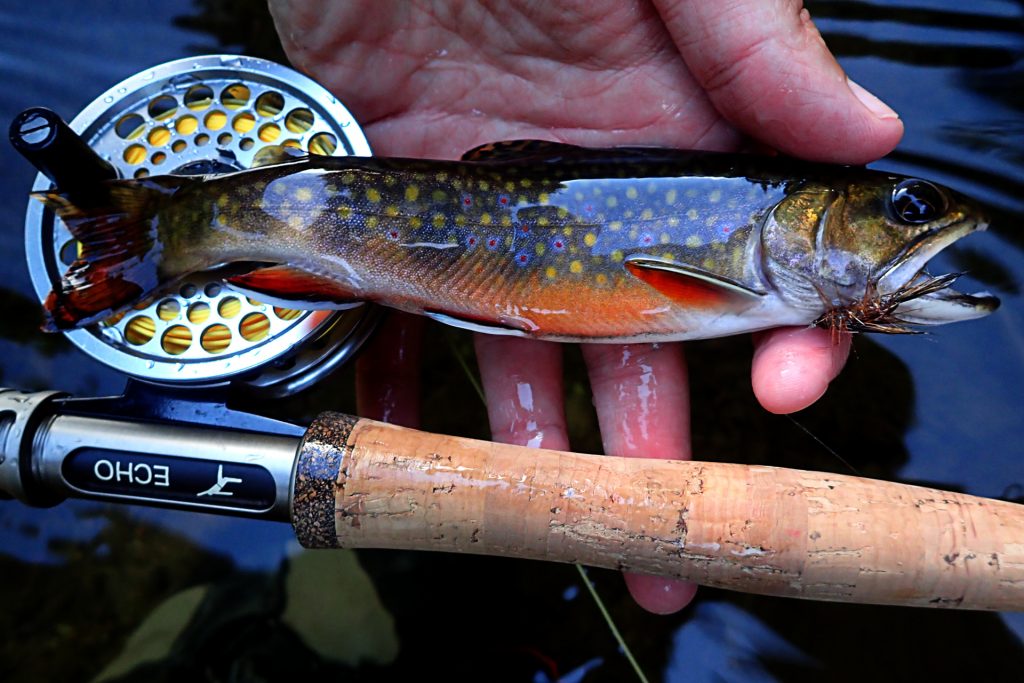
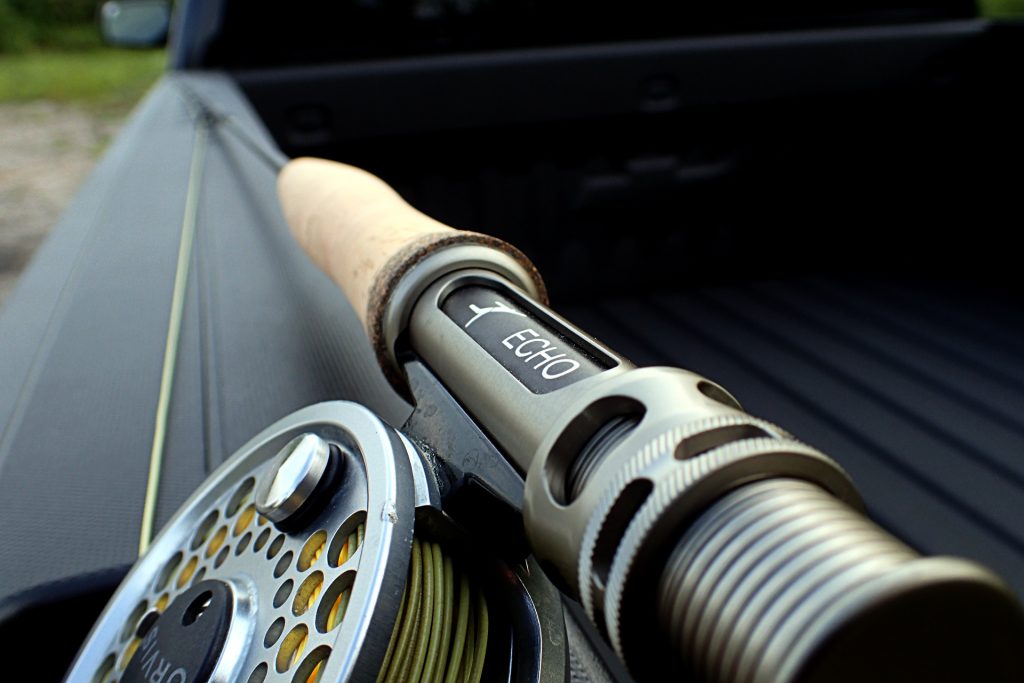
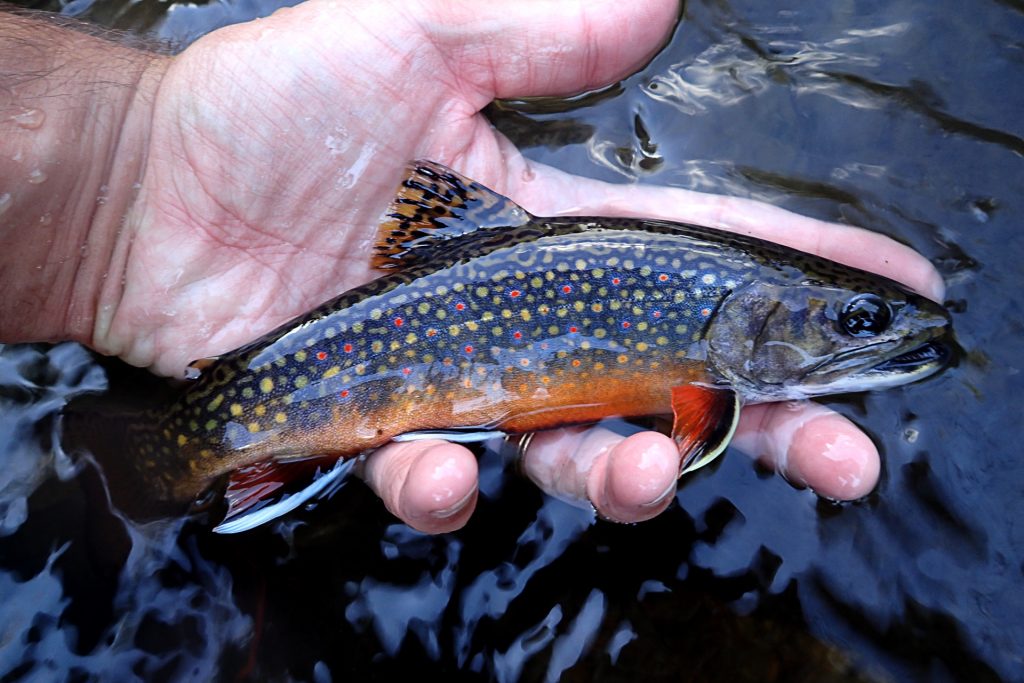
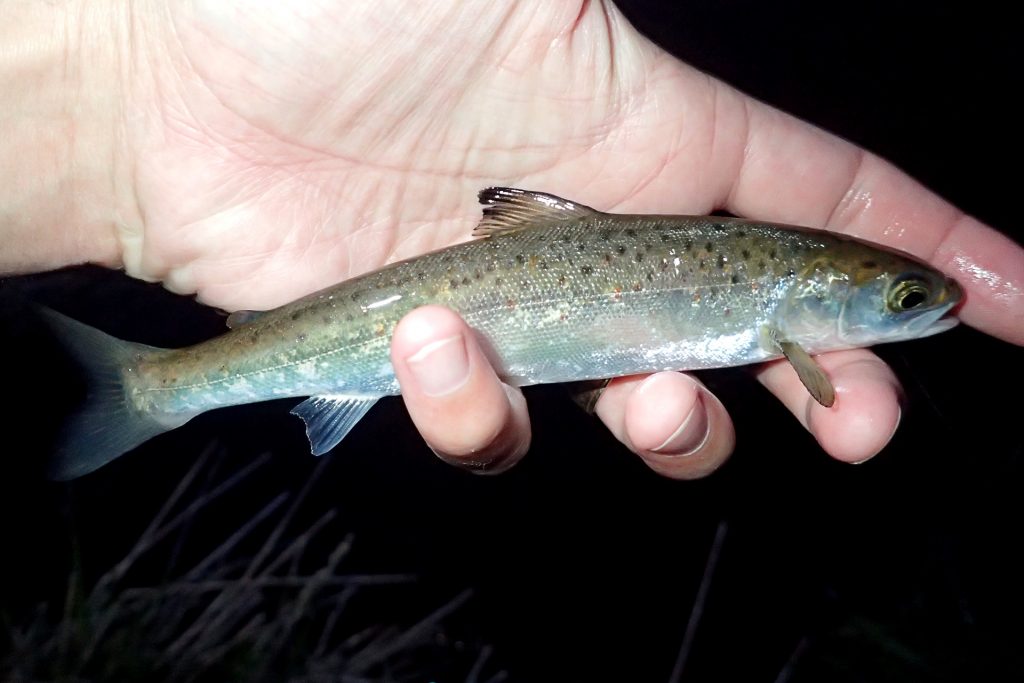
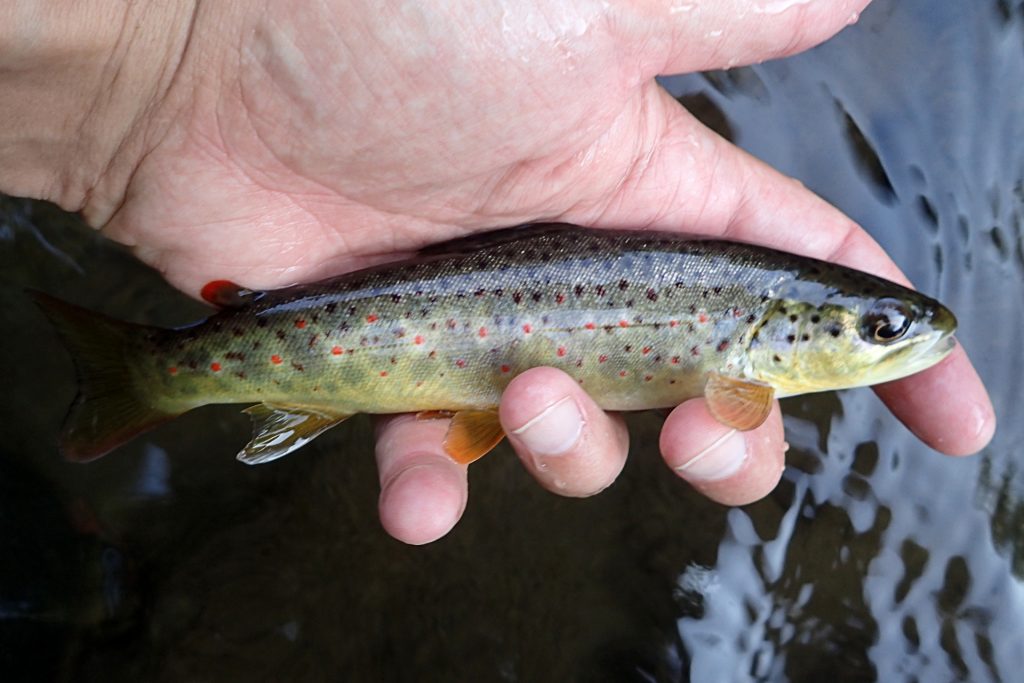
Hope your recovery goes well!
Great blog, After 3 seasons dabbling with a fly rod, I still hope to catch my first Brookie or Brown (technique & mid-morning fishing may be my issue). My last days in Sept. I caught a tiny rockbass, a chub, found a nice pair of sunglasses and a unopened (coldish) can of beer in the Eramosa.
Thanks PR!
If you’re persistent, you’ll get into some trout soon, especially the brookies. If you only do two things, first make sure you’re in the presence of trout (seeing them or knowing for fact they are there). Next, make sure you’re stealthy (keep out of sight and sound as much as possible). If you then put a fly in front of them, you’ll be extremely likely to have lots of hook-ups.
Steve
Great Post. You’re right about attraction to larger fish. The smaller ones are certainly often underappreciated. Love reading your blog and this was no exception. It’s sad that yet another trout season has ended. However I’m excited to try my luck with the steelhead and catch up on blogging and fly tying.
Tight Lines,
Liam
Hey, I missed this one. Great post. Love the shot of the little brown. The Credit river strain of brown trout dates back to 1930. Imagine what it was like back then for that original stocking of wild German strain fingerlings. Nothing but a few dirt roads carved through the bush and the odd horse and buggy/cart going up and down the road.
Back then the fish were often shipped in wooden barrels much like a wine or whiskey cask. Brown trout almost dissapeared for good in the seventies from over harvest. The MNR tried stocking them in large numbers during that time but the low fitness levels of the hatchery raised fish and the demand for fish for the pan ensured they were quickly fished out.
In the eighties when proper catch and release regulations were established (harvest limits section) the remaining wild stock took off with shocking numbers of both Brook and Brown trout in the same sections of river. It didn’t happen by a accident, many conservation groups worked together to improve and repair habitat during this time.
The list of excuses why this doesn’t happen in modern times is longer than the Credit river! The main reason is that it’s difficult to bill the taxpayer for something that is self sustaining and belongs to everyone, especially with the pressures of contract renewals that are the reality for those working in resource mangagment.
Hatchery raised fish billed to the public under the guise of an endangered species however is brilliant. Most people will never know or care, no matter how much it fails or costs. The best part is that because of their dismal survival rate even the next generation will have to stock them.
Do your knee exercises…we need you around.
Steve Noakes
Great comment Steve, I think people would enjoy reading this more than my blog post 🙂 Seriously, I always enjoy reading your thoughts on the Credit. Well said!
Steve